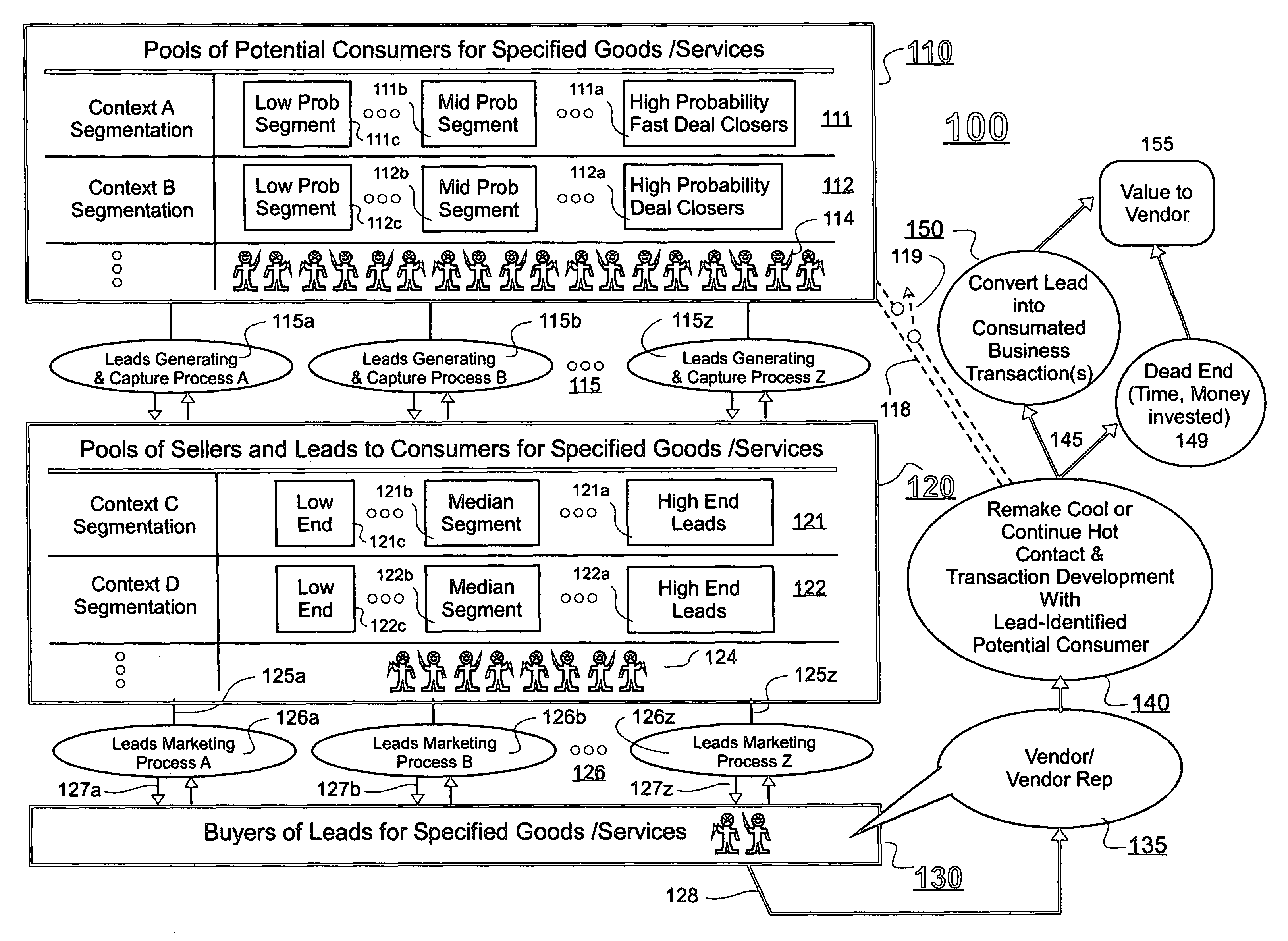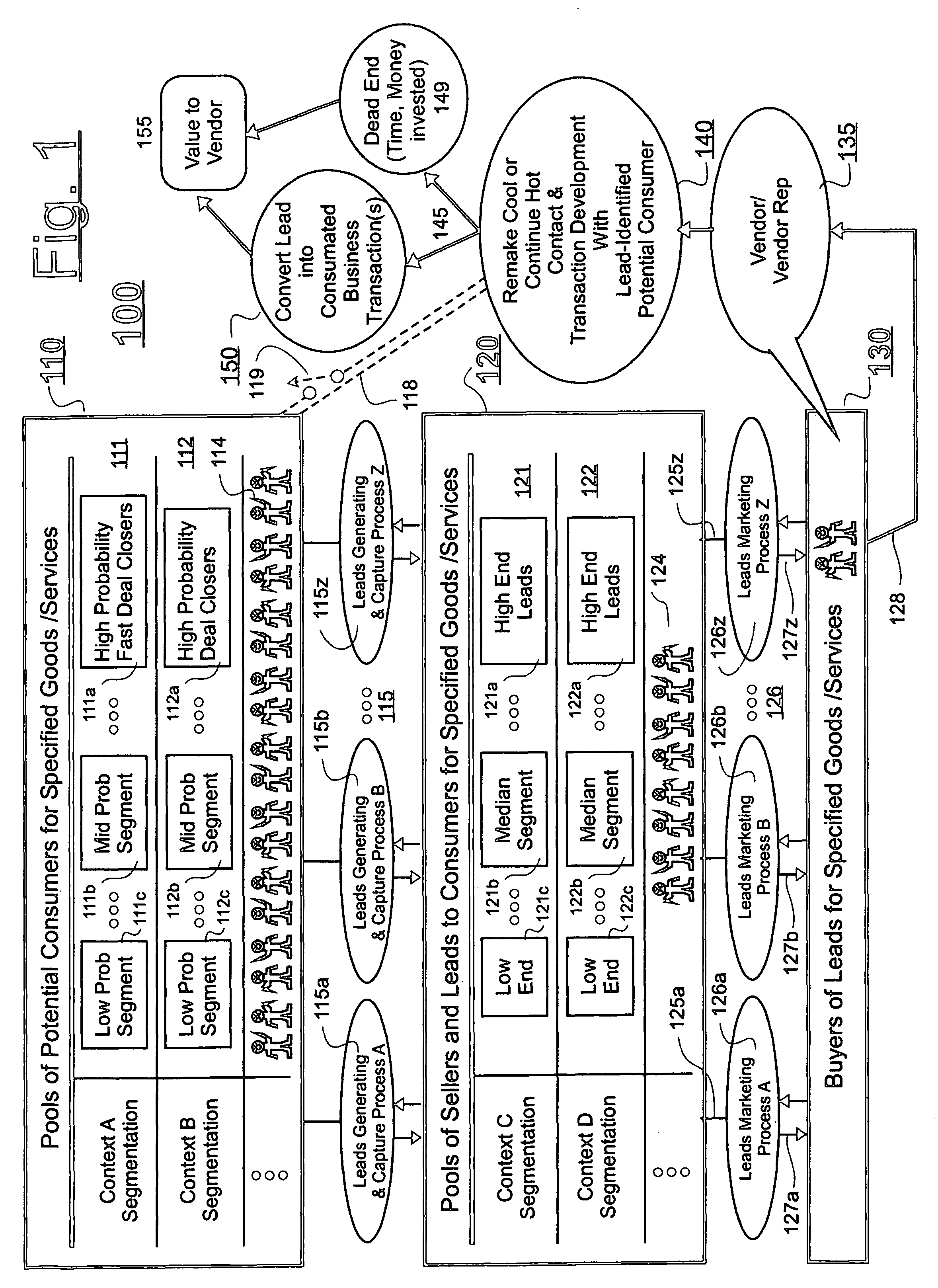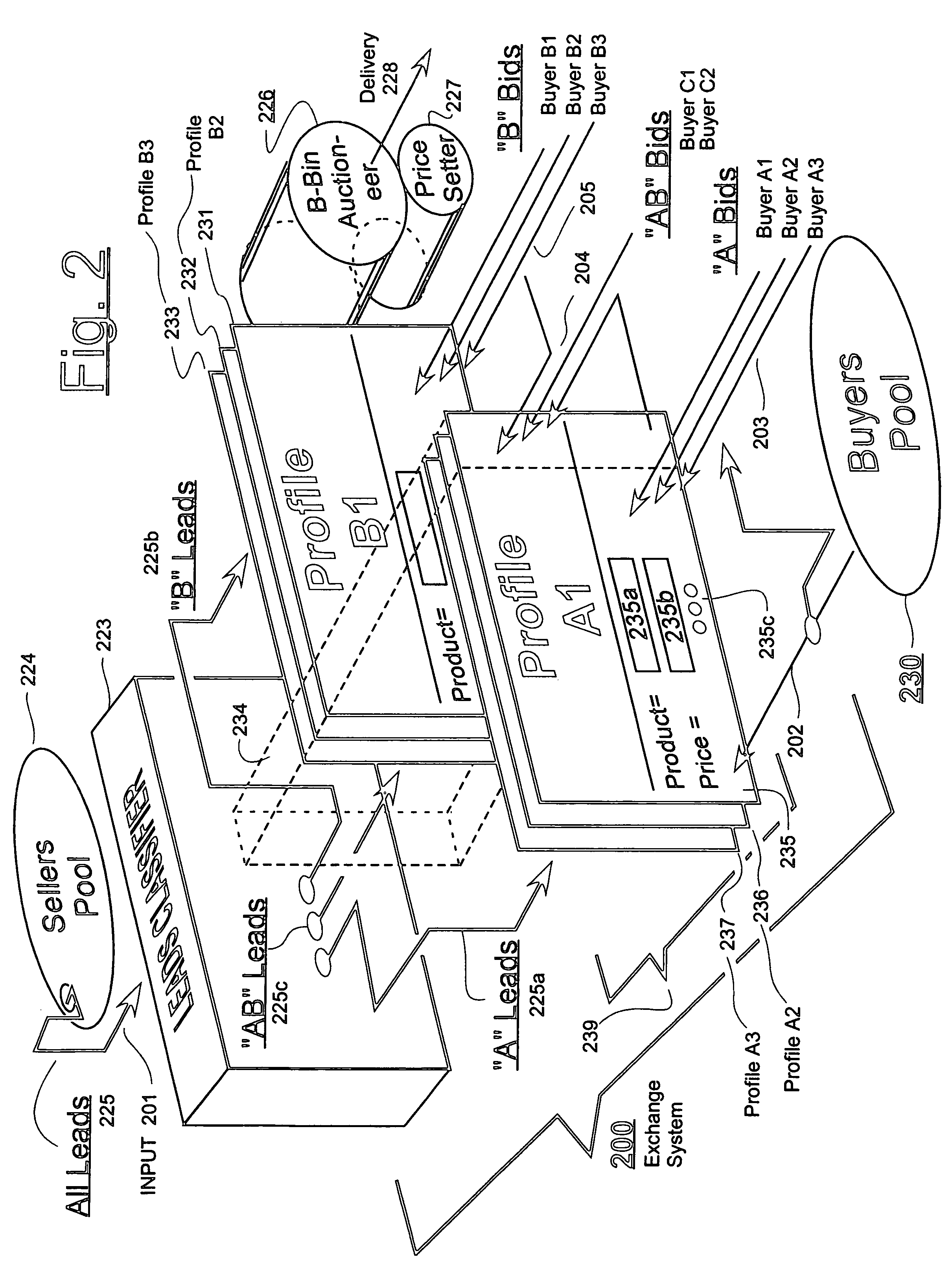System for implementing automated open market auctioning of leads
a technology of open market and lead auctioning, applied in the field of automated open market pricing systems, can solve the problems of difficult to create fair and efficient pricing mechanisms, lead buying and selling marketplace problems, and process is very haphazard, so as to maximize auction-generated revenue, reduce probability, and maximize revenue
- Summary
- Abstract
- Description
- Claims
- Application Information
AI Technical Summary
Benefits of technology
Problems solved by technology
Method used
Image
Examples
Embodiment Construction
[0028]FIG. 1 is a block diagram of a vertically organized marketplace 100 which includes a leads generating layer 115, a leads selling and buying layer 126, a leads delivering layer 128, and a leads exploiting (converting) layer 140-150.
[0029]More specifically, a pool of all practically reachable consumers for each given good or service (the product) is represented at 110. This pool 110 may be segmented in any of a variety of ways depending on product, price range and / or other context setting parameters. The context-setting parameters may include, but are not limited to: (a) the associated class or range or mixture of products involved (e.g., automobile, loan refinance service, perishable fruits, etc.); (b) the price range of the product bundle; (c) the longevity of the lead, meaning how long the prospect for closing a deal remains viable (e.g., must be done within a day, a week, 3 months, a year, etc.); (d) the geographic location of the prospective consumer; (e) the financial well...
PUM
 Login to View More
Login to View More Abstract
Description
Claims
Application Information
 Login to View More
Login to View More - R&D
- Intellectual Property
- Life Sciences
- Materials
- Tech Scout
- Unparalleled Data Quality
- Higher Quality Content
- 60% Fewer Hallucinations
Browse by: Latest US Patents, China's latest patents, Technical Efficacy Thesaurus, Application Domain, Technology Topic, Popular Technical Reports.
© 2025 PatSnap. All rights reserved.Legal|Privacy policy|Modern Slavery Act Transparency Statement|Sitemap|About US| Contact US: help@patsnap.com



